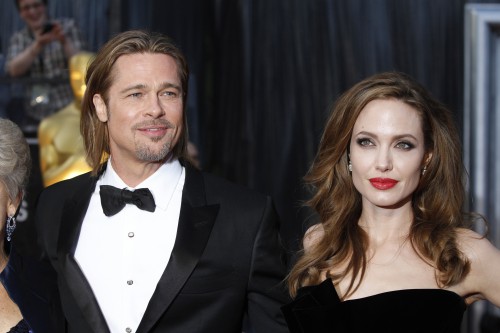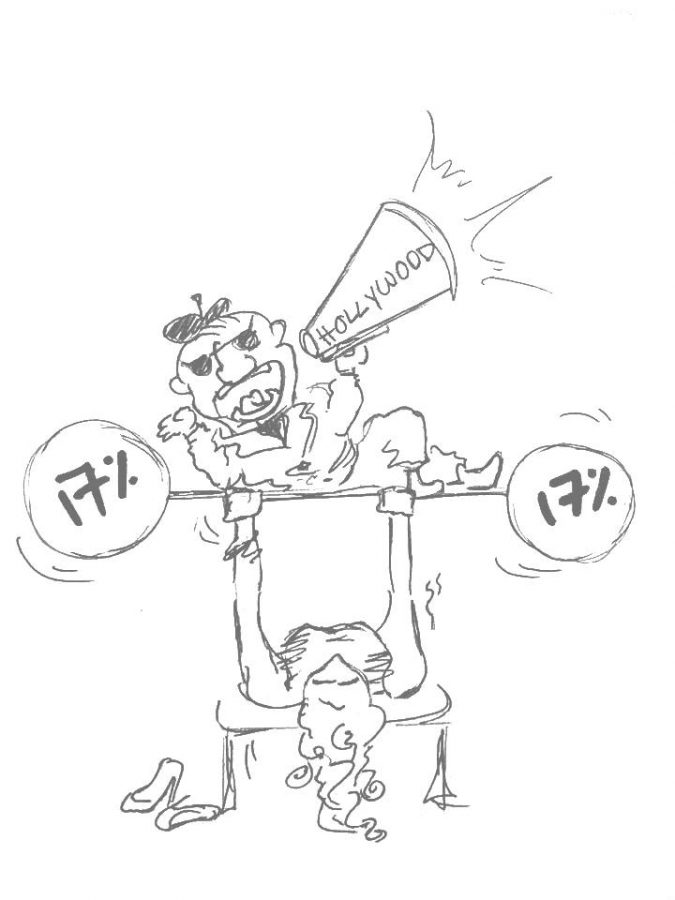Illustrated by AT
For an industry that glamorizes female nightlife and builds it up to be a young girl’s dream, Hollywood does not have a lot of women to show for it. The low percentage of women involved in the film industry show a persisting trend of inequality.
Women make up a staggering minority of movie creators: only 7% of directors, 13% of writers, and 20% of producers. This means that there are nearly five men for every woman in the movie-making industry.
According to the Annenberg School for Communication and Journalism at the University of Southern California, only 28.4% of the speaking characters in the 100 most successful films of 2012 were female. Even more distressing is that a third of these speaking female characters were portrayed in a provocative light. In the full five year survey, 2012’s percentages are the highest.
Out of the 20 most popular movies currently playing at movie theaters, 17 of the lead actors are males. The three movies now showing that have lead actresses are Gravity, We’re the Millers, and The Mortal Instruments: City of Bones (Fandango).
Winston Lin (Jr.) said, “The number of males and females currently in the film industry is roughly the same, though there is definitely an imbalance in their roles. Women tend to be more dominant in terms of filling the sexy roles every guy would watch movies for. Put a hot girl in a bad movie, and the movie will still appeal to a big audience. In other words, the women are often there to look pretty. Males tend to play the majority of the big/main characters.”
Males are often the lead in a film production. Movie executives who want to produce films that involve active female roles are not as successful as those who produce films with active male roles. The industry wants action, explosions, and heroism. Men have been portrayed as heroes since the start of film production, while women have been portrayed as mere love interests or damsels in distress.
Society should be at a point where it is common to have women directing films. Instead, it immediately draws unnecessary attention and speculation. The situation is a bit like the way some perceive racism: drawing attention to race makes matters unnecessarily tense.

Without the numbers and statistics, the ratio of women to men in film appears equal. Like the student I interviewed, not very many people question the representation of women in films and whether they share the same number of roles as men. Because the uneven ratio of women to men in professional roles has become so ingrained in society, this disparity seems normal.
It can only be expected that when imbalance is omnipresent, it becomes the norm. According to National Public Radio (NPR), there seems to be a “17% glass ceiling” in the female outreach–only 17 percent of cardiac surgeons and tenured professors are women. When that ratio of women to men is so central in society, people fail to see that it is uneven.
NPR News broadcasted about a study which revealed that when women made up 17 percent of a room, the men in the same room believed the ratio of women to men to be 1:1. When women made up 33 percent of a room, the men thought there were more women in the room than men.
The importance of this unfortunate reality is that people have grown accustomed to the minimized representation of women in the world. The film industry, with all its concealed imbalances, unconsciously wires the minds of today’s moviegoers–young and old–to see that females are less significant than men. Hollywood is often referred to as a mirror; evidently, the way women are represented in entertainment reflects directly on our culture.
By STACEY YU
Staff Writer
Story continues below advertisement










